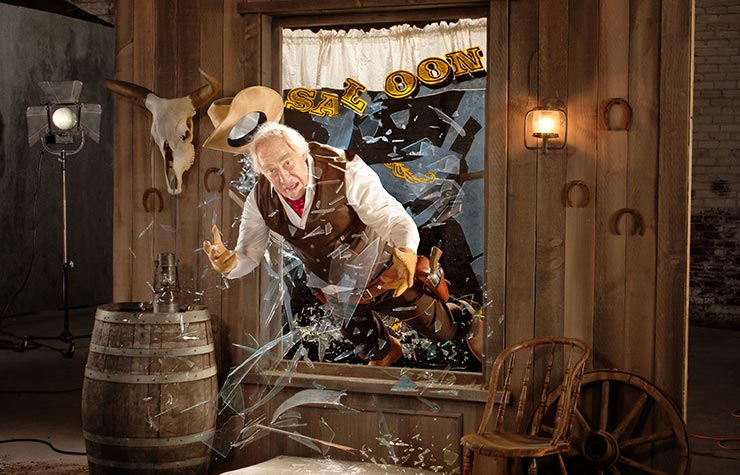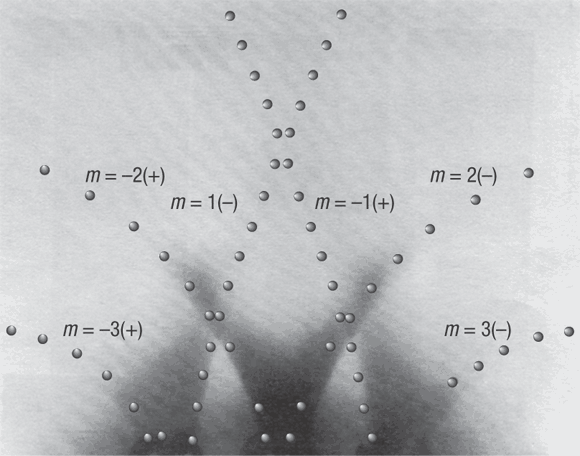
- Select a language for the TTS:
- UK English Female
- UK English Male
- US English Female
- US English Male
- Australian Female
- Australian Male
- Language selected: (auto detect) - EN
Play all audios:
HAVE A BABY _Hazards: PD, IE, UI_ Fertility science is expanding the frontiers of motherhood: 677 women 50 or older gave birth in the U.S. in 2013, most via in vitro fertilization with donor
eggs. That's how Aleta St. James had twins in 2004, when she was almost 57. "I still have the same energy I had in my 30s," she says. "I'm winding up, not winding
down." But the risks are considerable, notes New York University bioethicist Arthur Caplan. Mothers can get diabetes and high blood pressure; babies face complications from low birth
weights. "Morally you have to look at this on a case-by-case basis," he says. "There are strong reasons to say after 55 is too old." ADOPT A BABY _Hazards: IE, UI_ At 51,
Lorne Holden "climbed a Mount Everest of love" and adopted a 6-month-old boy from Guatemala. "The physical rigor is immense," she says, "but I don't think
I'm more tired than any other single mother." For 50-plus parents, adopting older kids from foster care is the easier route, says Adam Pertman, president of the Myriad Center on
Adoption and Permanency. "Domestic infant adoption is rare for older parents, and the overseas rate for parents of any age has plummeted." Think also about finances and support
systems, says Susan Caughman of Adoptive Families magazine: You might feel "invincible" at 50. "But 60 is a different matter." Climber Yuichiro Miura, 80. COURTESY MIURA
DOLPHINS, CO. CLIMB EVEREST _Hazards: PD, IE, PE, UI_ Almost 46 percent of Everest climbers from 2000 to 2005 were 40 or older, compared with just 19 percent from 1953 to 1989. In 2013,
80-year-old Yuichiro Miura made it to the summit. But conquering the top of the world is always perilous — at least 19 people perished on Everest after April's devastating earthquake —
and 60-plus climbers are three times as likely to die on the mountain. Veterans have at least one advantage: Young climbers are more likely to ascend too fast and suffer acute mountain
sickness, says mountain guide Travis Tucker. He recalls guiding a man in his mid-60s up Kilimanjaro: "He was like a freight train. I never doubted he was going to make it, but it was
one of the slowest trips I've had." SAVE A LIFE _Hazards: PD_ Octogenarians have donated kidneys, and nearly a third of donors nationwide are 50 or older. "We do not have an
upper age limit" for kidney donors, says Brigitte Sullivan of the Johns Hopkins Comprehensive Transplant Center in Baltimore. Harry Kiernan, who founded the National Living Organ Donors
Foundation, gave up a kidney at 54, and part of his liver three years later. "As you get older, you find a greater awareness of the need to start helping people," he says. Organ
donation, like all surgeries, carries certain risks: Deaths are rare, but less serious complications are not uncommon, according to Cristy Wright, whose website LivingDonor101.com is a
clearinghouse for donor information. BACKPACK ACROSS EUROPE _Hazards: PE_ A low-budget bunk bed blitz through Europe may be a youthful rite of passage, but not all hostel guests are
college-age vagabonds. "I love the hostel vibe and the opportunity to meet fellow independent travelers from around the world," says Chicagoan Barbara Weibel, 63, who collects
passport stamps most of the year and is unfazed by bunking with far-younger travelers. "Never once have I felt unwelcome." If you do Europe (or any other international destination)
on the cheap, Candy Harrington, author of _101 Accessible Vacations, _recommends travel insurance for health emergencies. "An air-ambulance evacuation will cost upward of
$50,000," she says. PLAY CONTACT SPORTS _Hazards: PD_ The number of knee and hip replacements has more than doubled in the U.S. since 2000, extending the athletic careers of weekend
warriors like Ben Shaw, who had a total hip replacement at 50. Shaw — a defenseman with the Danbury, Connecticut, Olde Crabs Hockey Club — rebuilt his strength and was back on the ice five
months later. Now 75, he's still skating. "Sometimes I ask myself, 'What in the hell am I doing out here?' " he confesses. It's a question most orthopedists
would echo. A fall or hard hit could shatter the point of connection between bone and implant, says orthopedic surgeon Anthony Unger of Sibley Memorial Hospital in Washington, D.C. But he
adds that materials and techniques have come a long way. "I have a lot of patients who are hockey players," Unger says. "And I let 'em play."



